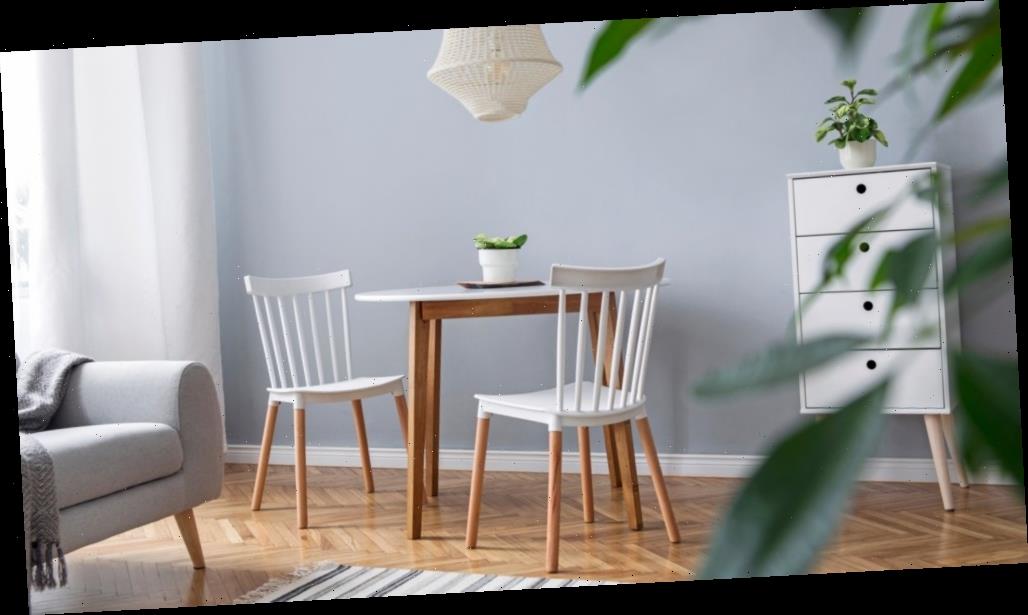
The 1920s was a big decade for home decorating. It marked the rise of a new breed of professionals known as “interior designers,” whose jobs it was to dream up rooms for important clients to host lavish parties (via BBC). It was the era of modernism, Bauhaus, and art deco. The decade embraced the glamor and sophistication of early Hollywood, it loved geometric patterns and angular shapes, and adored materials like chrome, glass, mirrors, and back-to-nature motifs. It was the era of furniture designers Le Corbusier and Eileen Gray, whose designs continue to inspire to this day.
But the 2020s appear to be as far from chrome, glass, and glamor as it gets, as the decade begins with a focus on minimalism and a shift towards making the home a space for serenity and self-expression.
2020 is the year to make your home more serene

With all that is going on, 2020 looks to be the year where the home where people want to create serene spaces in order to get away from it all. “People are looking for calm,” Mitchell Parker, editor for California renovation website Houzz says (via Los Angeles Times). “With all the tech and screen time, the environment [issues] and political landscape, I get a sense from talking with the designers and homeowners that people are really looking for their homes to be these kind of calm, quieting, soothing spaces where they can unplug and recharge.”
If you equate calm with nature, a relaxing vibe can easily be had by bringing plants into your home and adding them to shelves and tables (via Fresh Home). Christy Nichol also suggests clearing out your personal space by getting rid of things you don’t need — as clutter can be overwhelming to say the least.
2020 is the year for vintage accents
If you haven’t cleared your basements, attics, and garages yet, 2020 may be the year to Marie Kondo your storage in search of vintage items that you have might have inherited from older relatives and friends — or hit up thrift shops and estate sales pronto. “One thing we’re starting to see is more of a nod to vintage and traditional detailing — things like spooled legs, spindles, and other things we saw in furnishings from the 1800s and early 1900s,” interior designer Bria Hammel, tells Good Housekeeping.
Even if you’re not too keen on the idea of vintage, you can expect to see plenty of shades of blue, which provides a versatile backdrop not just for vintage designs, but for more contemporary, minimalist executions too. “Navy blue provides the perfect amount of contrast for interiors and exteriors in both traditional and modern home styles,” says interior designer Kerrie Kelly.
2020 is the year of Pantone's Classic Blue
Even before color trend-setting company Pantone announced its choice for color of the year for 2020, design sites like Digital Arts Online predicted that its selection would be a shade of blue because the color was so prevalent in Pantone’s palette.
The firm eventually went with Classic Blue because, as Leatrice Eiseman, executive director of the Pantone Color Institute puts it (via Architectural Digest), “When we look at the world around us, we know that we’re living with a lot of unrest, where some days we don’t feel quite as secure. Blue, from an emotional, psychological standpoint, has always represented a certain amount of calm and dependability. It’s a color that you can rely on.” Classic Blue is expected to appear in a range of products and in different materials, textures, and finishes for home interiors.
2020 is the year to buy art
If you’ve always wanted to build a collection reflecting your art preferences but haven’t gotten around to doing that, 2020 could be your year to start. But between the sheer volume of online galleries, local artists, and the availability of mass-produced prints and pieces, where do you begin?
Founder of the Tappan art collective, Chelsea Neman says (via Forbes), “Buy with your eyes and not your ears. When people first start collecting it’s so easy to get influenced by everyone else’s opinions, but I think the more important thing to consider is what you are drawn to and what you love. You should feel a connection to the piece you are acquiring.”
If you’re looking for a place to display your latest acquisitions, you may want to think outside the box and display art in unexpected places like bathrooms and entryways. As Neman puts it, “An interesting piece of art can really elevate those spaces and make them memorable for your visitors.”
Source: Read Full Article



